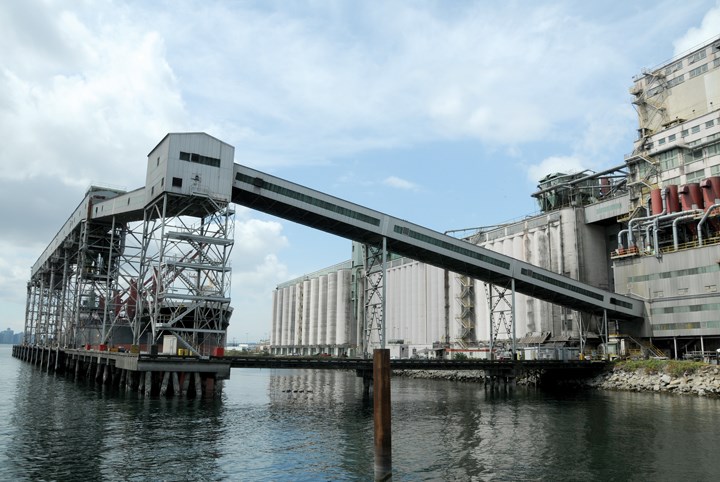Trade through Port Metro Vancouver and its North Shore terminals continues to roar.
The port released its mid-year report Tuesday, showing 1.5 per cent growth in cargo over the same period last year.
“Even in what we’re hearing may be a recession for Canada, we’re seeing some strong growth through the port, particularly in those commodities on the North Shore like grain and potash,” said Robin Silvester, the port’s president and CEO.
Grain exports, which go through Richardson International and Cargill Canada’s Low Level Road terminals was up 8.9 per cent overall.
Fertilizer, including potash loaded at Neptune Terminals and sulpher from Kinder Morgan Canada, were up an average of 18 per cent.
Beyond steady demand, Silvester said the low Canadian dollar, which has been dragged down by plummeting oil prices, is making Canadian commodities more attractive.
Metallurgical coal exports, which go through Neptune Terminals, were down slightly at 0.3 per cent. Silvester said he expects that trend to continue as global demand for steel dampens.
Mining giant Teck has announced it will have some rolling closures of its B.C. and Alberta mines, thanks to slumping demand. Neptune is in the final steps of a process to nearly double its coal handling and export capacity but that investment might take place over a longer period of time, Silvester said.
“The long-term demand still looks good,” he said
Richardson’s new grain elevators, however, are expected to be online in 2016, Silvester said.
Both projects were made possible through the Low Level Road project. Western Stevedoring has also since partnered with a Manitoba company called G3 Global Holdings to explore building a new 180,000-tonne grain elevator at the Lynnterm West Gate facility at the foot of Brooksbank Avenue.
“They certainly seem to be moving forward in the pre-application process fairly robustly,” Silvester said. “Fundamentally, that looks like a really exciting project. It’s very much the sort of thing we’ve been creating capacity for. It’s a really important product for Canada. It’s a really important product for people around the world. It’s food.”
Should the project go ahead, Western Stevedoring may need more land in order to continue its break bulk business.
“We’re always interested in purchasing industrial land,” he said.
Silvester warned that Metro Vancouver’s industrial land supply is under threat of redevelopment, which could pose a long-term threat to the region’s economy, especially as port jobs pay about 50 per cent more than the national average.
“We keep hearing the population is continuing to grow but if the economy hits a brick wall because there’s no longer land available for industrial growth that generates well-paid jobs, we’ve got a structural problem in the Lower Mainland,” he said.
The port still has two major pieces of land that sit largely unused — a vacant waterfront lot at the foot of St. Patricks Avenue, which will most likely end up being used to complement rail capacity, Silvester said, as well as an undeveloped piece of land on Old Dollarton Highway surrounding a boarding school.
“We’ve been having some discussions on whether that can be a part of a combination of things that might lead to us getting some more industrial land in an area that works better in terms of port use,” Silvester said.
While the Low Level Road project has freed up more capacity for increased rail service and terminal expansions, Silvester said it has proven a success for the community as well.
“I cycled the cycle path and the Spirit Trail and it’s a fantastic piece of infrastructure. I’m probably a little biased but I’m really proud of it,” he said. “If you walk the Spirit Trail and you listen for the road noise, you just can’t hear it. That noise barrier is actually staggeringly effective. We understand the concerns the community had. We put a lot of time into consulting with the community and I think the outcome is a project that I think everybody feels has met or exceeded expectation.”



